A selection of fruitful cherry varieties
Cherry is a favorite and widespread crop among Russian gardeners. In terms of demand, it is second only to the apple tree. Every gardener wants to plant the best varieties of cherries in his garden. Such specimens are characterized by a whole range of properties - excellent taste characteristics of the berries, immunity to diseases, and frost resistance.On this page, the most promising and well-proven varieties of cherries are selected with detailed descriptions, photos and reviews from gardeners.
| Content:
|
|
The right cherry variety is the key to future harvests |
Cherry varieties for the Moscow region and the middle zone
In the central region of Russia, cold winters and rainy weather are common. Therefore, when choosing a cherry variety, it is necessary to take into account factors such as climate, diseases, self-fertility, yield, and ripening time.
Vladimirskaya
|
Vladimirskaya cherry is an ancient variety of sweet cherries of unknown origin. Actively cultivated in the Moscow region and the middle zone. |
Fruiting of the grafted seedling begins 2-3 years after planting. Ripe fruits are prone to shedding. The more sun a tree gets, the sweeter the harvest.
- The variety is a multi-stemmed bush 3-5 m high. The crown is oval.
- Pollinators: Griot Moscow, Fertile Michurina, Lyubskaya, Vasilievskaya.
- Fruit ripening period: after July 15. The berries ripen gradually.
- Productivity: 25-30 kg.
- Fruit weight: 2-4 g. The skin is dark red. The pulp is juicy and pleasant. The taste is sweet and sour.
- Infection with coccomycosis and moniliosis is possible. Preventative treatments are required.
- Frost resistance: -31°C. Climate zone: 4.
“We have been growing Vladimirskaya cherries for about nine years. Delicious berries, without being cloying. Does not require special attention and care. The harvest of this variety is well stored and tolerates transportation well. I myself really love cherry jam, every year I make up to 15 liters.”
Volochaevka
|
The Volochaevka variety is distinguished by the fact that it was obtained from crossing the most famous ancient cherry varieties - Vladimirskaya and Lyubskaya. |
The fruits appear 4-5 years after planting. Safety during transportation is average.
- Tree height: 2-3.5 m.
- Pollinators are not required, the variety is self-fertile.
- Fruit ripening period: July 20-25.
- Productivity: 15-20 kg. Fruiting is regular.
- Fruit weight: 2.7-4.5 g. Cherries are dark red in color, the taste is sweet with a subtle cherry aroma. The pulp is dense and juicy.
- There is a danger of coccomycosis. High resistance to moniliosis.
- Frost resistance: -30°C. Climate zone: 4.
“I consider Volochaevka one of the best varieties of medium ripening. It does not require any additional shelter for the winter and regularly pleases us with a bountiful harvest.”
Shubinka
|
Shubinka cherry is one of the ancient Russian varieties. Early fruiting is average - fruiting begins 4-5 years after planting. |
Due to their low sugar content, fresh berries are almost never used; they are often processed. The longer cherries hang on the tree, the sweeter they become. The berries are firmly attached to the branches.
- Tree height: 4 m. The crown is wide-pyramidal, not dense.
- Pollinators: Lyubskaya, Black consumer goods, Moskovsky griot, Saika.
- The fruit ripening period is medium-late, stretching from the beginning of August to the end of September.
- Productivity: 16-25 kg.
- Fruit weight: 2-2.5 g. The berries are flat-round in shape, dark red in color. The taste is sour. The bone is difficult to separate from the pulp.
- The variety is susceptible to coccomycosis and attack by shoot moths.
- Frost resistance: -32°C. Climate zone: 4.
“The berries do not have a special taste, but are excellent for preparations. My wife also likes sour cherries.The tree is resistant to many diseases, but we still carry out preventive treatment every year.”
Memory of Enikeev
|
rice. |
The mid-early variety was obtained by crossing the Zhukovskaya and Korinka varieties. The crop begins to bear fruit 3-4 years after planting. Has average resistance to drought. The harvest takes place simultaneously, the berries ripen all at once.
- Tree height: 3 m. The crown is spherical, dense. Branches drooping.
- Pollinators are not needed.
- Fruit ripening period is mid-early: end of July. Maturation is friendly.
- Productivity: 15 kg.
- Fruit weight: 5 g. Ripe berries are dark brown in color, oblong in shape. The pulp is juicy and sweet. The taste is sweet with pleasant sourness.
- Resistance to coccomycosis is average.
- Frost resistance: -30°C. Climate zone: 4.
“Cherry of this variety has never hurt me. I carry out the usual antifungal treatment of all trees in spring and autumn, this is enough. On the topic of prevention, I was given good advice: add copper or iron sulfate to the lime to whiten the trunk. This works immediately against both pests and fungi.”
Renaissance
|
The cherry variety Vozrozhdenie is chosen if you need a crop with stable immunity to coccomycosis and moniliosis. The crop bears fruit abundantly and regularly. Any soil is suitable for growing. |
The first fruits can be tasted 4 years after planting. Ripe berries do not wrinkle when transported over long distances. The variety tolerates dry periods well.
- Tree height: 2.5-3 m. The crown is spherical with drooping branches.
- Pollinators that will increase cherry yields: Coral, Favorite, Lyubskaya, Crystal.
- Fruit ripening period is mid-early: first half of July.
- Productivity: 21-26 kg.
- Fruit weight: 2-4 g. The skin of the berries is dark burgundy.The seeds are small and easily separated from the pulp. The taste is sweet, dessert.
- The variety is highly resistant to diseases and pests.
- Frost resistance: -32°C. Climate zone: 4.
Turgenevka
|
Turgenevka cherry was bred in 1979 by Soviet breeders. Fruiting occurs 4-5 years after planting. |
The fruits of this variety are well suited for home canning: for cooking jams, making juices, compotes.
- Tree height: 3.5 m. The crown is reverse pyramidal, dense.
- Pollinators: Lyubskaya, Favorit, Molodezhnaya.
- Fruit ripening period: second half of July.
- Productivity: 25 kg.
- Fruit weight: 4-5 g. The color of the berries is dark burgundy, heart-shaped. The seeds are small and easily fall away from the pulp. The taste is sweet and sour. The berries are dark red in color and large in size. The taste is sweet and sour with a small sugar content.
- Moderately susceptible to coccomycosis.
- Frost resistance: -30°C. Climate zone: 4.
“We inherited Turgenevka along with the plot when it was already grown up. Now I see that of the varieties that we planted later, it is the most reliable. I have never been frozen, and I almost never get sick. And always with the harvest. Cherries ripen in mid-summer. Our children like the taste, and the jam turns out excellent - aromatic, without cloying.”
Robin
|
The main advantage of the Malinovka cherry is its high resistance to coccomycosis. Fruiting occurs in the 3-5th year. |
To plant this variety, you should choose loose sandy loam or loamy soil. It is necessary to avoid close proximity to groundwater.
- Tree height: 3-4.2 m.
- Pollinators: Shubinka, Lyubskaya, Molodezhnaya, Vladimirskaya.
- Fruit ripening period is average: second half of July.
- Productivity: 14-16 kg.
- Fruit weight: Dark red cherries, weighing 3-4 g.Large seeds easily fall away from the pulp. The taste is sweet and sour.
- The variety is weakly resistant to moniliosis, but is not afraid of coccomycosis.
- Frost resistance: -25 °C. Climate zone: 4.
“The Malinovka cherry has been growing in my garden for several years. I planted it next to the Lyubskaya cherry. Both trees bear fruit well, and we can harvest more than 12 kg of cherries.”
Cherry varieties for the southern regions
An important indicator when choosing cherry varieties is the taste of the fruit. The most productive and sweet varieties grow in the south of Russia. Descriptions and photos of the best varieties of cherries for the southern regions of the country will help you choose a suitable specimen.
Abundant
|
A high-yielding variety with berries that have a good dessert taste. The variety belongs to the steppe type of cherry, and looks like a medium-sized bush. |
The first berries will appear 3-4 years after planting the seedling. According to the description and reviews of gardeners, Izobilnaya cherries have good keeping quality and transportability.
- Plant height: 2.5-3 m. The crown of the bush is wide, of medium density.
- Pollinators are not needed, since the variety is self-fertile.
- Fruit ripening period is late: mid-August. Cherries do not ripen at the same time.
- Productivity: 11-14 kg. Fruiting is annual.
- Weight of cherries: 2.4-3.2 g. The berries are traditionally round in shape. The skin color is deep red. It is difficult to remove the stone from the pulp, and tearing the berries from the stalk is dry. The taste is excellent, sweet and sour.
- Preventive treatments against coccomycosis and moniliosis are necessary.
- Frost resistance: -33°C. Climate zone: 4.
“We start collecting Izobilnaya berries at the end of August. We really like this, since all the fresh berries have already been eaten by this time. The early one was caught several times by spring frosts, but thanks to the late flowering of the Izobilnaya, this is excluded.”
Podbelskaya
|
Cherry berries of the Podbelskaya variety are eaten fresh, they are used to make compotes, juices, and jam. |
Precociousness is average. Ripe berries do not fall off for quite a long time, allowing gardeners to take their time picking them.
- Tree height: 5 m. The crown is voluminous and dense. Crown diameter – 2 m.
- Pollinators: English early, Lotovaya, Aphrodite, Anadolskaya, Griot Ostheimsky.
- Early ripening variety: mid-June - in the southern regions.
- Productivity: 8-14 kg. Reaches maximum productivity by 12-15 years.
- Weight of berries: 3-5 g. The skin of the cherries is burgundy. The pulp is elastic, juicy, with a classic cherry aroma. The taste of the berries is dessert. The stone is large and easily separates from the pulp.
- The variety has good immunity to coccomycosis, but is susceptible to moniliosis and suffers from pests.
- Frost resistance: -26°C. Climate zone: 5.
“I have never tried the best variety, tastier cherries. Pleasant sweet and sour taste, large, juicy. Great to freeze and put in jars.”
Aphrodite
|
A promising variety with wonderful taste. Fruits with thick skin tolerate transportation well. Aphrodite is resistant to drought and frost. |
- Tree height: The crown is spherical, not dense.
- Pollinators: English early, Shubinka, Lotovaya, Anadolskaya.
- Fruit ripening period is early: mid-June.
- Productivity: 16-20 kg. Fruiting is annual.
- Fruit weight: 6-9 g. The shape of the berries is flattened. The skin and flesh are burgundy in color. The stone is easily separated from the pulp. The pulp is juicy. The taste is sweet with unobtrusive sourness.
- The variety is resistant to fruit fly damage to berries.
- Frost resistance: -27°C. Climate zone: 5.
Rossoshanskaya black
|
Tasty dark-colored fruits, compactness of the tree, high winter hardiness, and medium ripening period are the distinctive features of the Rossoshanskaya black cherry variety. |
The crop begins to bear fruit 3–4 years after planting. The product is good for culinary processing into tasty jam; it makes excellent preparations, such as jam, liqueur, compote.
- Tree height: 4 m. Compact crown.
- The variety is self-fertile. No pollinators required.
- Fruit ripening period is average: end of June.
- Productivity: 14-26 kg.
- Weight of berries: 3-5 g. Berries of traditional shape. The skin is almost black. The pulp is dense, elastic, aromatic. The taste is sweet with sourness.
- Weakly affected by coccomycosis.
- Frost resistance: -30°C. Climate zone: 4.
“The Rossoshanskaya black cherry variety is unpretentious and can withstand frost and dry periods of the year well. But the yield with self-pollination is not so high, so I had to plant other varieties nearby.”
Krasnodar sweet
|
An early ripening variety with high winter hardiness. Precociousness is low. The berries are suitable for industrial cultivation. |
- Height of an adult tree: 3 m. The crown is rounded, the foliage density is average.
- Pollinators are not needed.
- Early ripening period: mid-June.
- Productivity: 9-14 kg. Fruiting is regular.
- Weight of berries: 4-5 g. The fruits are uniform, burgundy. The pulp is pink, sweet taste.
- Resistant to coccomycosis.
- Frost resistance: -28°C. Climate zone: 5.
Ukrainian
|
The variety is distinguished by tasty berries and good winter hardiness. The crop yield is average. |
To increase the yield, neighboring varieties are needed. Precociousness is low. The use of the fruit is universal. The plant is multi-stemmed and has the form of a bush.
- Bush height: 3.8 -4.2 m. The crown is rounded, the branches are weeping.
- Pollinators: Vladimirskaya, Amorelle rosea, Rastunya.
- Average fruit ripening period: July 5-10
- Productivity: 18 kg.
- Fruit weight: 2-3.5 g. The shape of the cherries is flattened. The skin is dark burgundy, elastic, glossy. The pulp is dense. The bone is small. The taste is pleasant, sweet and sour.
- Moderately resistant to coccomycosis.
- Frost resistance: -26°C. Climate zone: 5.
“I personally didn’t see any shortcomings in this variety. Ukrainka cherries have an excellent taste and aroma, a high level of productivity, and also have an early ripening period.”
Low-growing varieties of cherries
Low-growing varieties of cherries are widely popular. These varieties are convenient for growing in small garden plots. Low growth makes it easy to care for crops and easy to harvest.
Tamaris
|
Tamaris tolerates low temperatures and frosts, so it is suitable for growing in the Moscow region. The first berries appear in the 2-3rd year of fruiting. |
The lifespan of a tree is 20 years. Ripe fruits do not tolerate transportation well and may leak juice.
- Height of an adult tree: 2.5 m. Foliage of medium density.
- Pollinators: Lyubskaya, Turgenevka, Krasnodar sweet, Zhukovskaya.
- Mid-late ripening period: late July - early August.
- Productivity: 10-14 kg.
- Weight of berries: 4-5 g. Cherries are glossy, deep red. The taste, according to reviews, is sweet, dessert. The pulp is dark red, juicy. Separating the cherry from the stalk is semi-dry. Separating the pit from the pulp is easy.
- Good immunity to coccomycosis, less resistance to moniliosis. It is imperative to carry out preventive measures against pests.
- Frost resistance: -26°C. Climate zone: 5.
“The Tamaris cherry was a pleasant discovery for us.We took the first harvest 3 years after planting the seedling. The number of berries was amazing. Enough to make the preparations and enjoy plenty of fresh cherries. It tolerates short-term lack of watering and fertilizing. The fruits are large, tasty and very juicy.”
Bystrinka
|
The hybrid variety Bystrinka is one of the best for the Moscow region. It has excellent taste, early fruiting and high yield. |
The culture was obtained by crossing the Zhukovskaya and Zolushka varieties. Thanks to its excellent yield, ease of care, and high harvest quality, the variety is successfully cultivated on an industrial scale.
- Tree height: 2-2.5 m. The crown is spherical.
- Pollinators: Turgenevka.
- Fruit ripening period: first half of July.
- Productivity: 20 kg.
- Fruit weight: 3.5-4.5 g. The berries are oval in shape. The skin is dark red, elastic, dense. The pulp is sweet, tender, juicy.
- Tendency to fungal diseases.
- Frost resistance: -34°C. Climate zone: 4.
“We have been growing this variety on our plot for 8 years. Every year it brings a good harvest, all branches are strewn with berries. Cherries are large, sweet, ideal for making not only compotes, but also wine. For pies, we freeze some of the berries or dry them in the oven.”
Lighthouse
|
The Mayak cherry variety is a multi-stemmed bush. The lighthouse is characterized by high precociousness. The fruiting period of trees is 30 years. |
Even overripe berries do not fall from the tree, but they may crack. Cracking also occurs from excessive rainfall or watering.
- Plant height: 2 m. The crown is spreading, sparse.
- Pollinators: Generous vole, vole.
- Fruit ripening period: late July-early August.
- Productivity: 15-20 kg.
- Fruit weight: 4-6 g. The berries are round, slightly flattened. The skin is dark red, round.
- The variety is susceptible to fruit rot and coccomycosis. Preventative treatments are necessary.
- Frost resistance: -30…35°С. Climate zone: 4.
“In 15 years of cultivation, the Mayak cherry has never frozen, it bears fruit every year, we collect 2 buckets per bush. It does not get sick often, although it is written everywhere that the variety is susceptible to coccomycosis. True, we always complete processing on time and never miss a single one. Pollinated by neighbors’ cherries, the trees are not that far from each other.”
Winter Garnet
|
A new dwarf variety for the central regions of Russia. Refers to self-fertile varieties. The first berries appear in the 3rd year. |
The variety is frost-resistant - suitable for cold regions of the Urals and Siberia. In addition, the culture is very decorative.
- Tree height: 1.5-1.8 m.
- Pollinators are not needed.
- Average ripening period: second half of July.
- Productivity: 10 kg.
- Fruit weight: 3-4 g. The color of the berries is from ruby to dark burgundy. The taste is sweet with sourness, the seed is small.
- Good resistance to most diseases.
- Frost resistance: -45°C. Climate zone: 3.
“I specifically chose dwarf trees for my garden plot. The city nursery recommended the Winter Pomegranate variety. The first berries appeared 3 years after planting. The berries are very juicy, tasty and sweet. We make jam from them.”
In memory of Mashkin
|
Dessert variety. It is characterized by good yield, excellent taste, and resistance to diseases. |
The use of berries is universal. They are suitable for fresh consumption and for processing. Precociousness is high.
- Height of an adult tree: 2.5 m. The crown is voluminous.
- Pollinators: Chocolate, Generous, Brunette, Bogatyrka.
- Fruit ripening period: mid-July.
- Productivity: 14-20 kg.
- Weight of cherries: 5 g.The berries are red and shaped like a heart. The fruits are very tasty and sweet. The pulp is elastic, dense, aromatic.
- Immunity to fungal diseases is high.
- Frost resistance: -36°C. Climate zone: 4.
“Of the advantages, I note the high frost resistance of both the tree itself and the flower buds, as well as a fairly high immunity to fungal diseases. In addition, the berries of the Mashkin Memory cherries ripen in large quantities and have high external and taste properties.”
Saratov Baby
|
Dwarf hybrid, the result of crossing cherries with sweet cherries. It is decorative. |
The first berries can be tasted 3 years after planting. The variety is resistant to frost. The tree is very decorative.
- Tree height: 2.5 m. The crown is arched.
- Pollinators: Lyubskaya, Turgenevka, Nord Star.
- The fruit ripening period is mid-season: in the twenties of June.
- Productivity: 15 kg.
- Berry weight: 4-5 g. The skin is dark red. The taste is sweet and sour. The seeds are small and separate well from the pulp.
- High immunity to fungal diseases.
- Frost resistance: -35°C. Climate zone: 4.
“I have a small dacha, only one cherry tree grows - Saratov Baby. I chose it based on the photo and description on the Internet. It is pollinated by neighboring trees. My cherries produce an excellent harvest. Every year we collect more buckets of berries. We eat them fresh - the taste is simply excellent. We drink compotes with pleasure in winter.”
Youth
|
Cherry Molodezhnaya is popular in the Moscow region and central Russia. |
The main advantage of this variety is considered to be high frost resistance and good immunity to disease.
- Height of an adult tree: maximum 2.5 m. The crown is rounded, drooping.
- Pollinators: Vladimirskaya, Mayak, Shubinka, Lyubskaya.
- Medium ripening period: fruits are ready for consumption in mid-late July.
- Productivity: 10-15 kg.
- Fruit weight: 3.5-4 g. The shape of the berries is oblong, the color is dark burgundy. The taste is sweet with pleasant sourness. The seed is small and easily separated from the pulp.
- The tree does not need treatment against pests and diseases.
- Frost resistance: -34°C. Climate zone: 4.
“The Molodezhnaya cherry tree grows small and slightly drooping. This is very convenient - you don’t have to climb high to pick up berries. It bears fruit annually, consistently and in large quantities. We always have time to bring the berries home and process them - there is no damage from transportation.”
Chocolate girl
|
The Shokoladnitsa variety is distinguished by delicious chocolate-colored fruits. Precociousness is average. |
The berries are used universally: eaten fresh, stored for the winter. Winter hardiness and drought resistance are high.
- Tree height: 2-2.5 m. The plant grows as a bush. The crown is compact and dense.
- No pollinators required.
- Fruit ripening period is average: July.
- Productivity: 15 kg.
- Fruit weight: 3-3.5 g. The berries are round, one-dimensional. The flesh is deep red. The stone easily separates from the pulp. The taste is sweet.
- The variety is susceptible to infection with mycoses.
- Frost resistance: -27°C. Climate zone: 5.
“The chocolate maker does not require special care. If treated in a timely manner, it is not susceptible to infection with moniliosis and other fungal diseases. According to reviews and our experience, Shokoladnitsa is not suitable for freezing.”
Similar articles:
- 12 best varieties of felt cherries with photos and descriptions ⇒
- The best summer varieties of apple trees with photos and descriptions ⇒
- Columnar apple trees: early, middle and late varieties with photos and reviews ⇒
- Early varieties of pears for growing in the Moscow region and the middle zone ⇒
- Varieties of dwarf pears with descriptions, photos and reviews from gardeners ⇒
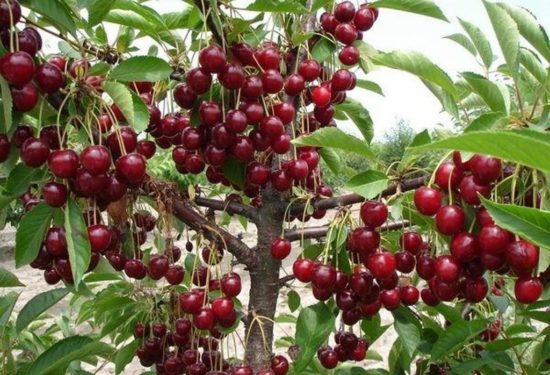

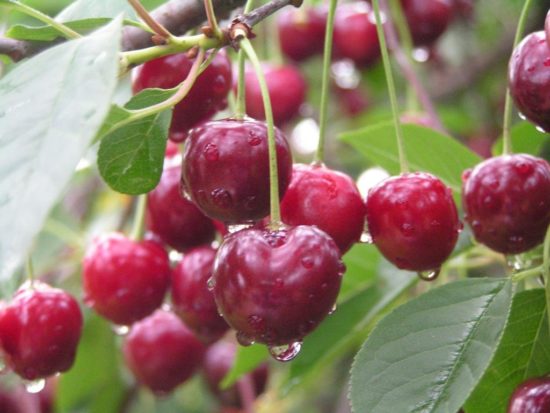
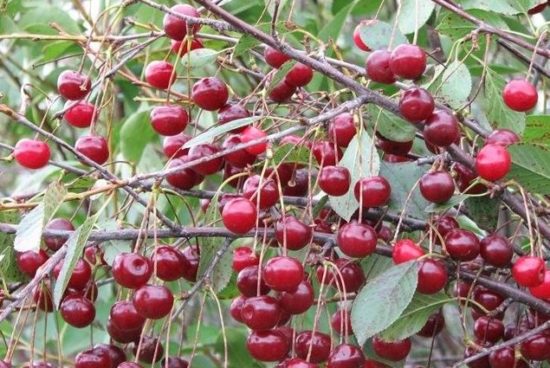

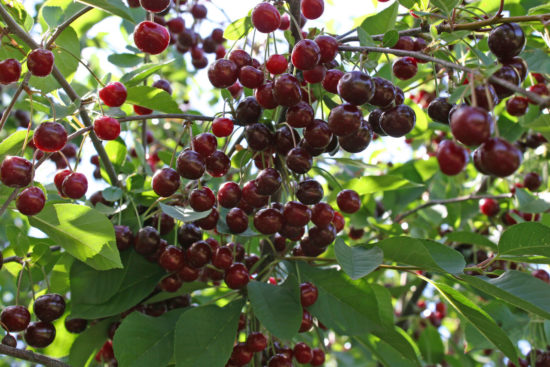
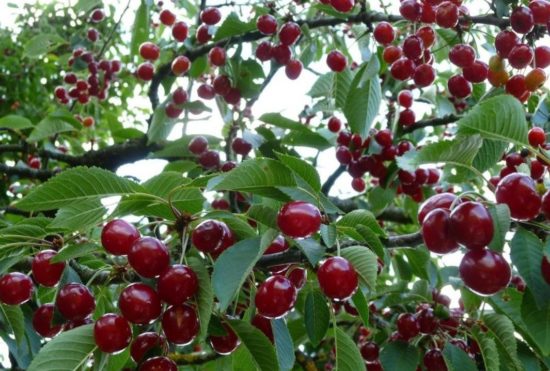
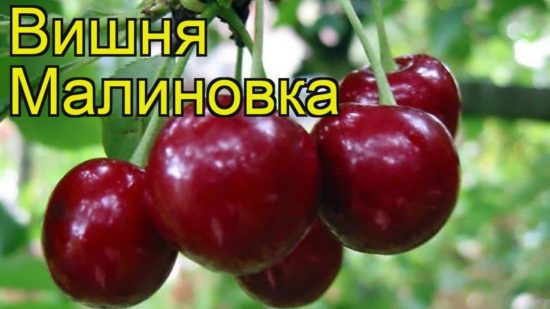
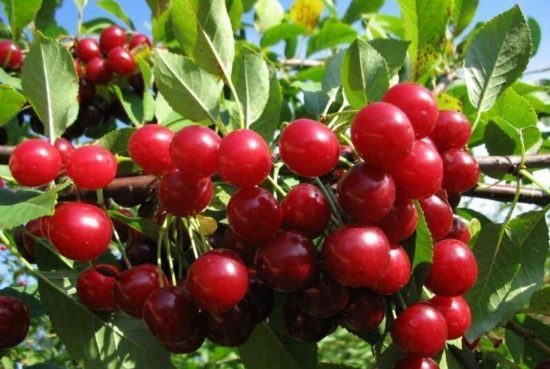
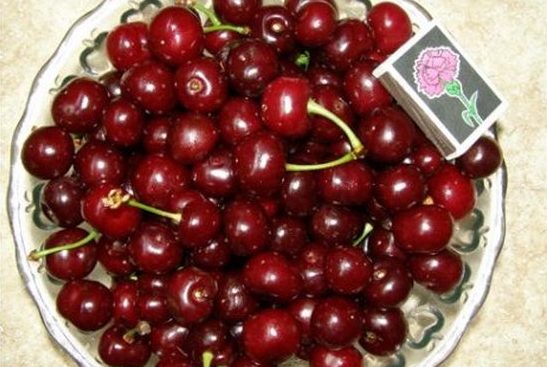
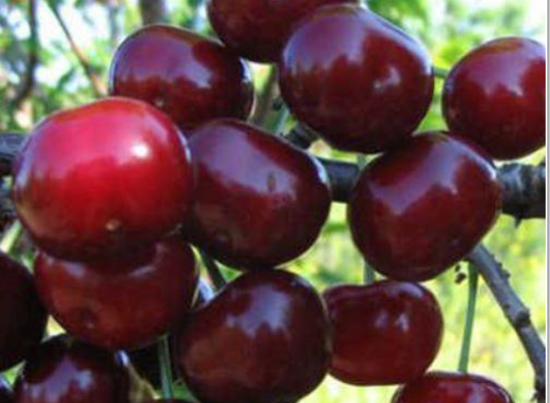
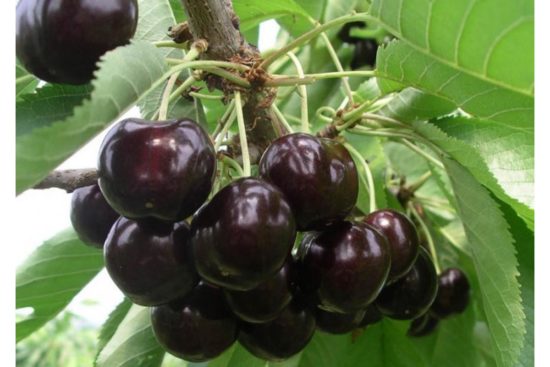
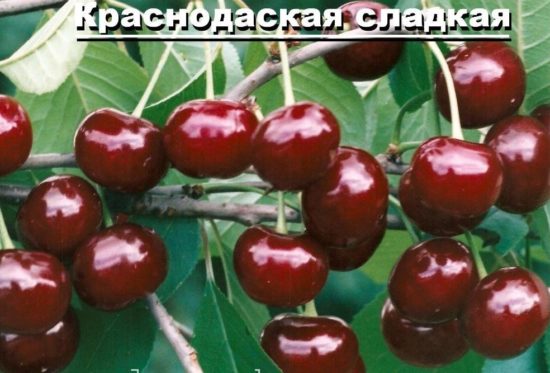
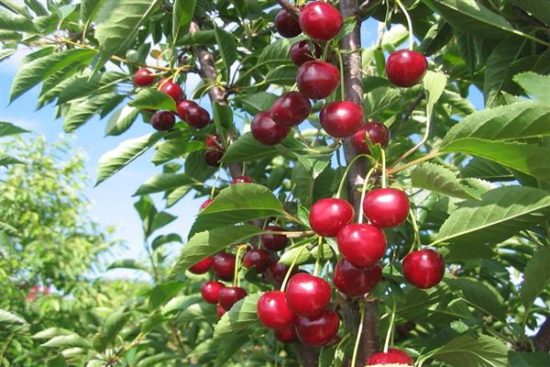
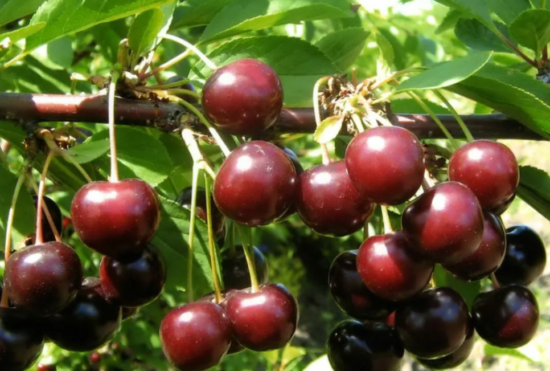
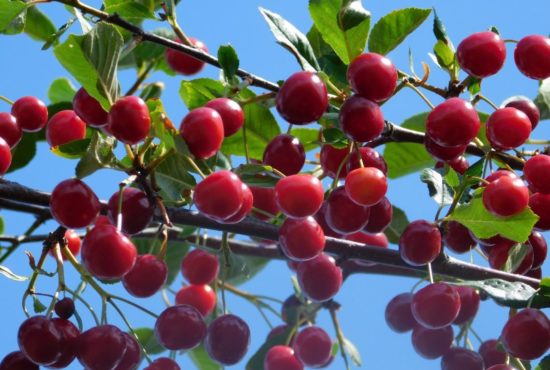
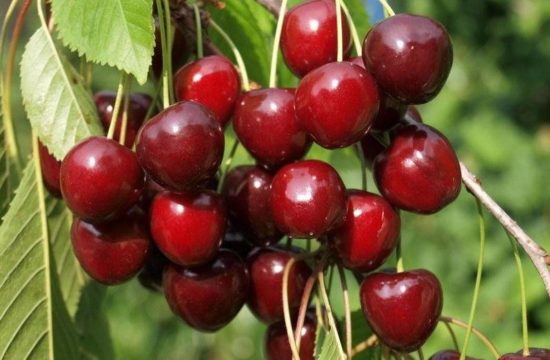
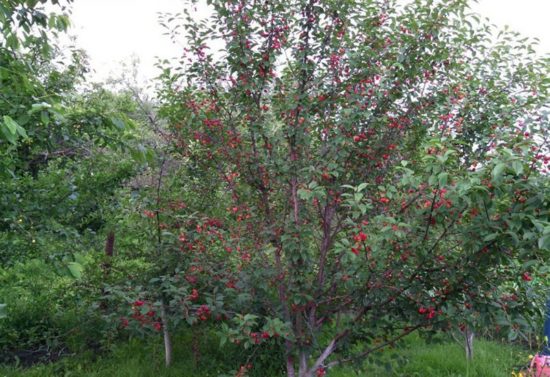
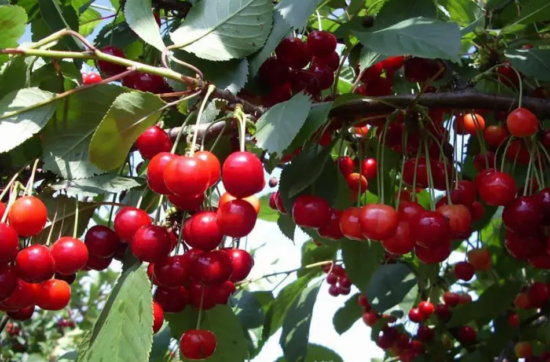
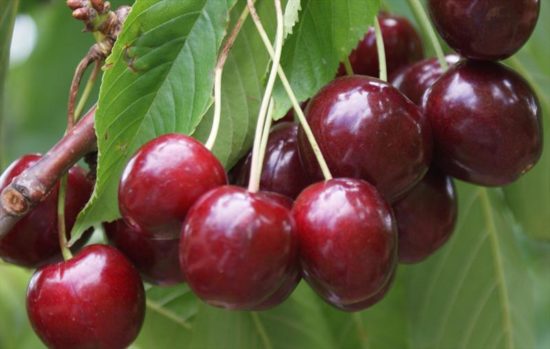
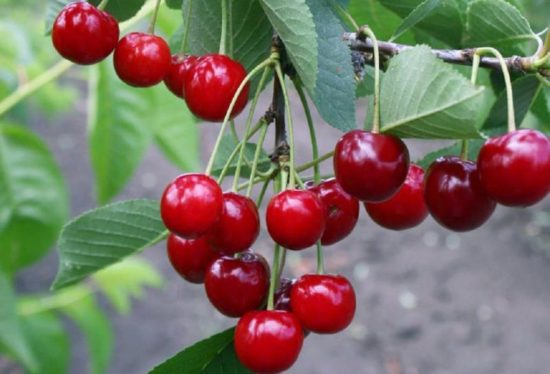


 CUCUMBERS NEVER GET SICK, I'VE BEEN USING ONLY THIS FOR 40 YEARS! I SHARE A SECRET WITH YOU, CUCUMBERS ARE LIKE THE PICTURE!
CUCUMBERS NEVER GET SICK, I'VE BEEN USING ONLY THIS FOR 40 YEARS! I SHARE A SECRET WITH YOU, CUCUMBERS ARE LIKE THE PICTURE! You can dig a bucket of potatoes from each bush. Do you think these are fairy tales? Watch the video
You can dig a bucket of potatoes from each bush. Do you think these are fairy tales? Watch the video
 How our fellow gardeners work in Korea. There is a lot to learn and just fun to watch.
How our fellow gardeners work in Korea. There is a lot to learn and just fun to watch. Eye trainer. The author claims that with daily viewing, vision is restored. They don't charge money for views.
Eye trainer. The author claims that with daily viewing, vision is restored. They don't charge money for views. A 3-ingredient cake recipe in 30 minutes is better than Napoleon. Simple and very tasty.
A 3-ingredient cake recipe in 30 minutes is better than Napoleon. Simple and very tasty. Therapeutic exercises for cervical osteochondrosis. A complete set of exercises.
Therapeutic exercises for cervical osteochondrosis. A complete set of exercises. Which indoor plants match your zodiac sign?
Which indoor plants match your zodiac sign? What about them? Excursion to German dachas.
What about them? Excursion to German dachas.